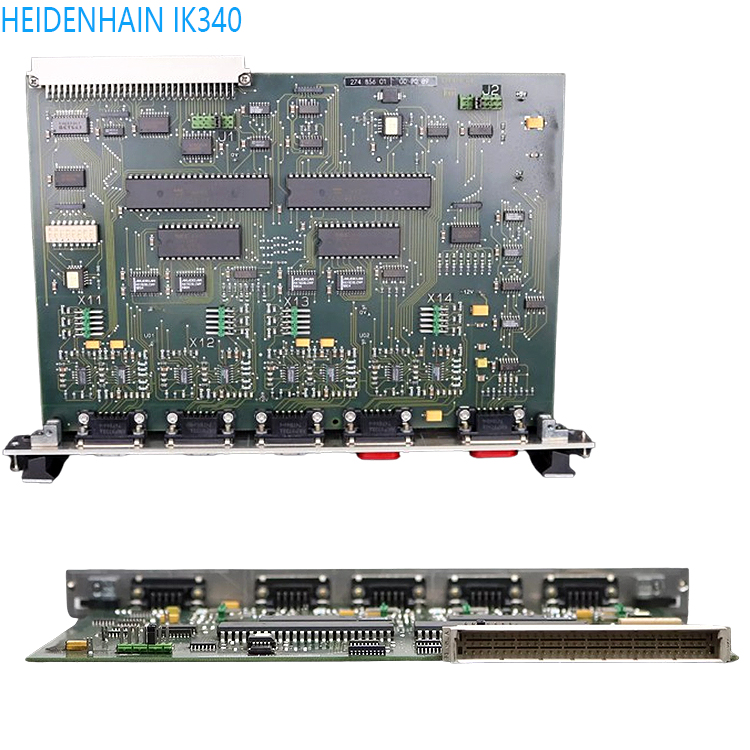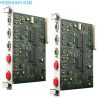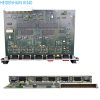Description
Many products are not yet on the shelves. Please contact us for more products.
If the product model is inconsistent with the display picture, the model shall prevail. Please contact us for specific product pictures, and we will arrange to take photos in the warehouse for confirmation.
We have 76 shared warehouses around the world, so sometimes it may take several hours to accurately return to you, please understand. Of course, we will respond to your concerns as soon as possible.
Functional analysis of core operating units
Power unit
Composition: main power unit (diesel engine/gas turbine/nuclear power), auxiliary generator set, thruster.
Key technologies:
Electronic fuel injection system: For example, Sulzer RT-flex diesel engine adjusts the injection amount in real time through sensors to achieve low-load precise control.
Exhaust valve control logic: adopts redundant sensor design, and can still alarm and keep the exhaust valve working when a single sensor fails.
Modular control unit: MAN B&W ME series diesel engines use distributed control units (CCU), and each cylinder independently controls injection and exhaust.
Navigation unit
Function:
Channel measurement: Use sonar and GPS to measure water depth and obstacle location, and generate electronic charts.
Navigation mark maintenance: Automatically inspect lighthouses and buoy status, and trigger maintenance instructions when abnormalities occur.
Emergency response: Integrate radar and infrared equipment to perform maritime search and rescue missions, with positioning accuracy up to meter level.
Communication unit
System architecture:
Internal communication: Crew members can talk through signal transmitter (microphone) → central processing unit (signal amplification/filtering) → receiver (speaker).
Satellite communication: INMARSAT ship station supports distress telex transmission, and the antenna automatically tracks satellites to ensure global coverage.
Typical equipment:
Combined radio: Integrated DSC (digital selective calling), VHF (very high frequency) and MF/HF (medium and high frequency) communication functions.
GPS/Beidou receiving unit: Provides ship position information with an error of less than 10 meters.
Power control unit
Distributed processing unit (DPU): such as the core component in the host remote control system, responsible for signal processing, control logic execution and status monitoring. DPU is interconnected through the CAN bus network to form a distributed control system, supporting multi-point operation of the bridge, control room and cabin.
Engine safety unit (ESU): monitors the operating status of the host (such as speed, temperature, vibration), triggers alarms or automatically reduces speed/stops when abnormal.
Functional operation unit
Fuel supply unit: integrates fuel pumps, filters, valves and sensors to achieve fuel purification, pressurization and supply.
Oil separator control unit: controls the oil separation process through PLC or single-chip microcomputer, monitors oil quality parameters (such as temperature and pressure), and has fault alarm function.
Human-machine interaction unit
Bridge operation unit (BMU): includes a control panel and a composite car clock for host remote control, speed setting and status display.
Liquid cargo management unit: equipped with radar level gauges and temperature sensors, real-time monitoring of ballast tank and liquid cargo tank parameters, supporting loading calculation and stability monitoring.
Functional analysis:
Navigation unit: integrates GPS, radar and other equipment to provide functions such as ship positioning and route planning.
Power unit: includes engines, propellers, etc., responsible for the drive and power distribution of the ship.
Communication unit: realizes ship-to-shore communication and ship-to-ship communication, and supports data transmission and voice calls.
Safety unit: such as fire protection system, emergency escape device, etc., to ensure the safety of ships and personnel.
Technical features:
Automation and integration: modern ship operation units tend to be highly automated and integrated, and remote monitoring and operation are achieved through electronic control systems.
Intelligent upgrade: introduce artificial intelligence, big data and other technologies to improve the unit’s operating efficiency and fault warning capabilities.
Green energy saving: the power unit introduces an exhaust gas waste heat recovery system to reduce carbon emissions.
Network collaboration: based on Ethernet, data sharing of navigation, communication, and power systems is realized to improve emergency response speed.
Application scenarios:
Commercial ships: such as cargo ships and tankers, emphasizing transportation efficiency and safety.
Military ships: such as warships, focusing on stealth, maneuverability and combat system compatibility.
Special ships: such as scientific research ships and rescue ships, require customized operation units to support special tasks.
Function coverage and typical scenarios
Signal acquisition and processing
Sensor interface: Receive signals from radar level gauges, pressure sensors, etc., and filter, amplify and convert protocols through signal processing units (such as DPU).
Data fusion: Integrate multi-source sensor data (such as draft, temperature, and air pressure) into a unified format for the operation unit to make decisions.
Control execution and monitoring
Host remote control: The navigation console or control room sends instructions (such as start, reversing, and speed regulation) through the operation unit, and the DPU analyzes and controls the servo mechanism or solenoid valve to perform actions.
Safety protection: ESU monitors host parameters, cuts off fuel supply or triggers emergency shutdown when the limit is exceeded.
Human-machine interface and alarm
Visual operation: Industrial PC or touch screen displays device status (such as host speed, oil separator separation volume), supports historical data query and report generation.
Graded alarm: trigger sound and light alarm according to the severity of the fault (such as minor leakage, critical fault), and record it in the system log.
Redundancy and reliability design
Dual network redundancy
CAN bus dual redundancy: main/backup network runs in parallel, automatically switches when a single network fails, and ensures uninterrupted transmission of control instructions.
Redundancy of key equipment
Emergency generator: automatically starts when the main power fails to ensure power supply for core equipment (such as navigation, communication).
Sensor redundancy: key parameters (such as host speed) are measured by dual sensors to improve data credibility.
Fault isolation mechanism
Distributed processing: when a single DPU fails, the system reallocates tasks to other nodes to avoid global paralysis.
Typical cases and applications
Host remote control system (ACC20)
Composition: BMU (driving station), CRM (central control room), DPU network, ESU (safety unit).
Process: driving station sends vehicle command → DPU analysis → control host throttle/reversing → ESU monitoring status → trigger alarm when abnormal.
Oil separator automation control
Control logic: dynamically adjust the oil separation amount according to oil quality parameters, automatically shut down and alarm when the separation efficiency is abnormal.
Human-machine interface: the touch screen displays the separation amount and slag discharge cycle, and supports manual/automatic mode switching.
Liquid cargo ship loading system
Sensor network: radar level gauge + pressure sensor + temperature sensor to achieve multi-tank collaborative monitoring.
Software functions: stability calculation, loading and unloading plan optimization, collision risk warning.
Future development trend
Intelligent upgrade
AI assisted decision-making: predict equipment failure based on historical data and optimize maintenance plans.
Digital twins: build a virtual model of the ship, map the equipment status in real time, and support remote operation and maintenance.
Network integration
IoT integration: connect the operating unit to the ship-shore integrated network to achieve remote monitoring and software upgrades.
Green technology adaptation
Energy efficiency management unit: monitor ship carbon emissions and optimize the main engine operating parameters to meet environmental protection regulations.
All products on this website are special products, and the market price has been fluctuating.
The specific quotation is subject to the customer service. Because the product is a new product, the price is not real.
Please confirm the model and product, price and other detailed information with the customer service before placing an order. The website has been used.
New ones are on sale, please contact customer service for communication.
Related product recommendations:
IS200JPDBG1A
IS200EDISG1A
IS400TDBTH6A
IS200TCATH1ABA
GE DS215DMCBG1AZZ03A
PM864AK01 3BSE01816R1
GFD233A103 3BH022294R0103
3BSE028140R0020
PPD517A3011 3BHE041576R3011
PPD517 3BHE041576R3011
3BHE040375R103E PPD115
PPD539A102 3BHE039770R0102
3BHE057901R0101 PCD235
3BHE039724R0C3D PPD513AOC-100440
PCD235C101 3BHE057901R0101
GFD563A102 3BHE046836R0102
GFD233A101 3BHE022294R0101
GFD563A101 3BHE046836R0101
GFD563A102 3BHE046836R0102
GF D563 3BHE046836R010
PPD512 A10-15000 3BHE040375R1023
More……





Reviews
There are no reviews yet.